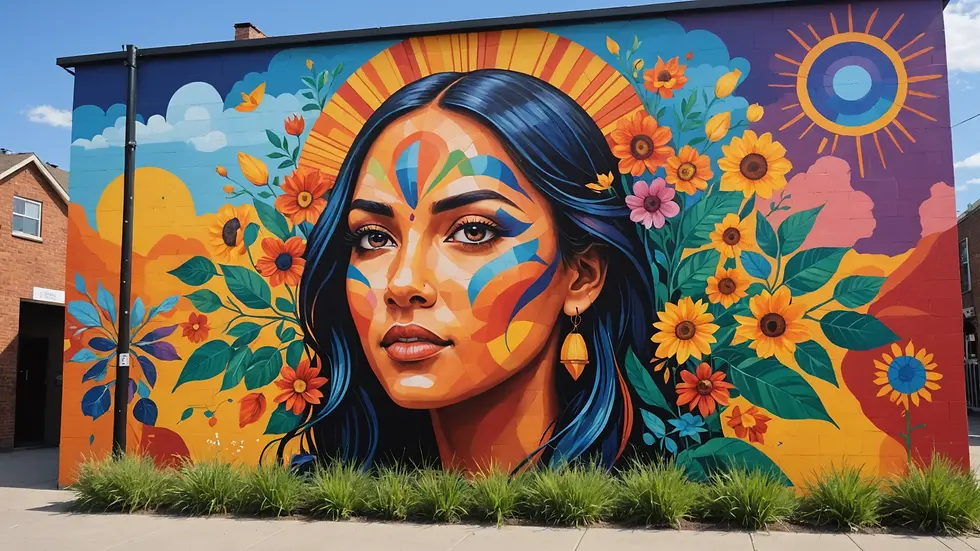How AI is Revolutionizing User-Generated Content: 7 Ways It's Transforming Marketing Strategies
- Gal Yefet
- 3 בינו׳
- זמן קריאה 3 דקות
In today's digital landscape, user-generated content (UGC) is more than just a trend; it’s becoming a cornerstone of effective marketing strategies. This content, created by real users rather than brands, can significantly influence purchasing decisions. Yet, with the explosion of UGC comes the challenge of processing and utilizing this wealth of material effectively. Thankfully, artificial intelligence (AI) is reshaping how brands manage UGC to turn it into a powerful marketing resource.
In this article, we will examine seven ways AI is reshaping UGC and how brands can use this technology to elevate their marketing efforts. Let’s explore the exciting possibilities that AI-driven UGC presents!
1. Content Curation Made Easy
Managing an overwhelming amount of UGC can be a daunting task. Brands receive thousands of images, videos, and reviews daily. AI simplifies this by using advanced algorithms that automatically curate the best content.
For instance, AI tools can analyze thousands of posts in seconds, identifying the highest quality UGC that aligns with the brand's goals. Studies show that brands using AI for content curation see a 30% increase in engagement from users. By analyzing sentiment and imagery, AI helps marketers focus on content that truly resonates with their audience, allowing them to craft more effective campaigns.

2. Enhancing Authenticity
Authenticity is essential for brand trust, especially when consumers are wary of traditional advertising. UGC inherently feels more genuine, showcasing real users and their experiences. AI enhances this authenticity by helping brands find content that connects on a personal level.
For example, a clothing retailer using AI can sort through thousands of customer photos and select those that are most relatable and emotional. Research indicates that UGC showcasing real customer experiences can lead to a 20% increase in sales as consumers feel more connected to brands that highlight relatable stories.

3. Data-Driven Decision Making
Data plays a crucial role in successful marketing. AI offers insights that improve decision-making. By analyzing UGC, brands gain a deeper understanding of consumer preferences and behaviors, enabling them to refine their strategies.
AI tools can evaluate user interactions and track sentiment around various content types. For example, a beverage company might discover through AI analytics that posts featuring customer reviews yield a 40% higher interaction rate than simple promotional posts. This data can inform future campaigns, improving engagement and boosting conversion rates significantly.

4. Personalization at Scale
Personalization is no longer optional; it’s essential. AI leads the way in helping brands personalize content based on user-generated material. By analyzing user behavior and preferences, AI can generate tailored recommendations for individuals.
For instance, a travel company can use AI-driven chatbots that respond to inquiries with helpful UGC, such as reviews or vacation photos from other users. This strategy fosters loyalty, as customers appreciate brands that cater to their interests. Studies indicate that brands providing personalized experiences can see customer retention rates rise by 15-25%.
5. Optimizing Content for Searchability
For UGC to be effective, consumers need to find it easily. AI enhances the searchability of UGC by automating tagging and categorizing content according to themes, keywords, and user interests.
For example, a brand that sells home goods may use AI to categorize product photos by style or use, ensuring they appear in relevant searches. This not only boosts content visibility but also helps consumers easily find what they are looking for. Brands that optimize their UGC can expect a 50% increase in search traffic, driving more potential customers to their platforms.
6. Predicting Trends and Influencer Engagement
AI excels at spotting trends before they hit the mainstream. By evaluating UGC patterns and user sentiment, AI can predict which trends will resonate with specific demographics.
For instance, a cosmetics brand might notice a spike in posts related to eco-friendly products. By responding to this trend early on, they can tailor their marketing strategies accordingly, ensuring relevance. Moreover, AI can help brands identify social media influencers who match their target audience, enhancing UGC reach and engagement with niche markets.
7. Streamlining Campaign Management
Managing UGC-focused marketing campaigns can be complex. AI helps automate many campaign management tasks, allowing brands to execute their strategies more efficiently.
From scheduling social media posts to tracking engagement metrics, AI can handle routine tasks, freeing marketers to focus on creative strategies. A recent study found that companies using AI in their campaign management processes were able to decrease time spent on scheduling by 40%, enabling quicker responses to consumer interactions and real-time strategy adjustments.
The Future is Bright for UGC and AI
AI's role in user-generated content is




תגובות